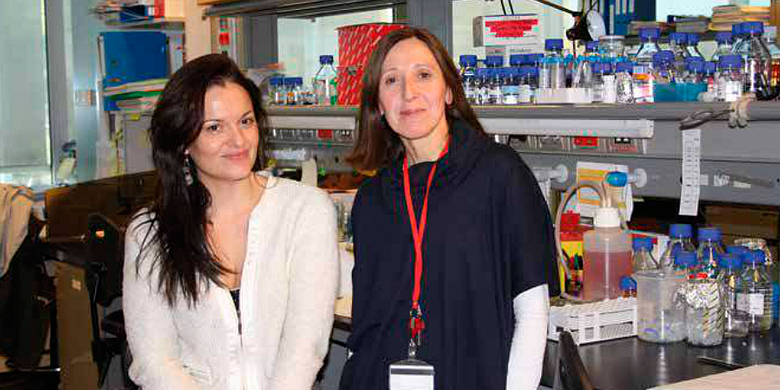How to stop ‘bone-eating’ cells and reduce the risk of osteoporosis
Osteoporosis is a disease that affects all bones of the skeleton and is caused by a loss of bone resistance.
As a result, the bones become more prone to fracture spontaneously or in response to minimal trauma. Each year millions of people suffer bone fractures related to osteoporosis, and the number is set to increase in the future due the aging of the population. Age, together with gender, body weight and dietary habits, are risk factors that can lead to the loss of bone through osteoporosis.
Although osteoporosis has always been thought of as a disease that affects postmenopausal women, the experts warn that it can also affect men. Osteoporosis is associated with an increase in the differentiation and activation of the cells that degrade bone—the osteoclasts—leading to a pathological increase in the rate of bone reabsorption. Therefore the development of new therapies able to reduce the activity of these cells could be of great use in the prevention and treatment of osteoporosis.
A group at the CNIC, working in collaboration with other groups at the same center and in Barcelona, Belgium and France, has discovered a novel mechanism through which it is possible to increase bone mass by controlling these ‘bone-eating’ cells. The findings were published in the Journal of Clinical Investigation.
The group led by Dr. Mercedes Ricote, with Drs. Mª Piedad Menéndez and Tamás Rőszer as first authors, has demonstrated that the differentiation and activation of osteoclasts is a process controlled by retinoid X receptor (RXR).
RXR is a protein found in the interior of cells, where it detects the presence of lipids and derivatives of vitamin A. This triggers the expression of specific genes, through which RXR controls developmental processes, immunity, homeostasis and metabolism. The CNIC researchers have demonstrated that in osteoclast progenitor cells RXR controls the expression of MAFB, a key molecule in the process of osteoclast generation.
Through the use of genetically modified mice, these scientists demonstrated that the loss of RXR function in osteoclast progenitor cells gives rise to the development of giant osteoclasts that unexpectedly lose the capacity to reabsorb bone. Consequently, male mice develop denser bones under normal physiological conditions and females are protected against the loss of bone mass associated with low estrogen levels, a frequent occurrence in postmenopausal women.
An interesting feature of this study is the demonstration that selective activation of RXR with bexarotene, a drug currently used to treat cutaneous lymphomas, completely blocks osteoclast differentiation. The possible use of drugs to modulate RXR activity, and therefore the formation of osteoclasts, could have implications for the treatment of diseases associated with the loss of bone mass.











